“[A good artist is] one with imagination and the ability to tell a good story. How well a man draws cuts no ice with me, if what he’s trying to express comes out vague and choppy.” ‐ Jack Kirby
(Sherman cited in Morrow (ED.) 2004, (vol.1) p. 181).
Thursday, October 25, 2012
Reminder: Final Assessment 2 Deliverables Due Tues WK14 by 4pm
Reminder: Final Assessment 2 Deliverables Due
Assessment 2 for Visual Story is due next week (wk 14) on Tuesday the 30th October by 4pm. Update shortly to confirm how to do so, will be most likely via the Dropbox or Teaching Computer like last lesson.
Make sure the assessment has your name and student number, a folder with PDFs etc. in the 'Paul Mason' folder would be the best bet.
Email me if you missed the presentation component, I know there were a few faces missing, or were there and then disappeared. Thank you for your patience on the day, and I hope the feedback was helpful.
Friday, October 12, 2012
In Class Exercises due Week 12
Working against deadlines myself, we're almost at the end, guys :D Just a few weeks for all of us.
Just re-iterating that the In-class exercises are indeed due this coming week, just so that it's out of the way for you to be able to get a presentation done for week 13, and finalized files from Assessment 2 for week 14.
Try to get the exercises together as a PDF by Tuesday and uploaded to 'Learning @ GU', under the 'In-Class Exercises' tab on the Discussion board (already up if you go check the 2107GFS tab). Easy :D
Any scans and revisions are welcome, as I bet you've learnt some things since the first few weeks :) Otherwise, all good, PDF away. Any problems, such as a file being too big to upload, email me. I recommend if you have any issues like this, leave a message on the 'Learning @ GU' discussion forum, and email me the bigger file via www.yousendit.com
See you all Tuesday :D Info re: Week 13 and 14 in class.
Wednesday, October 10, 2012
Emma Coats's 'Story Shots' blog.

A great Tumblr blog from Pixar's Emma Coats. Here's a few Q & A's, but check out the main feed for more great Storyboarding/Concept/Storytelling/ Characterisations/Dialogue tips and theories!
http://storyshots.tumblr.com/post/33352307768/questions-answering-some-questions
Week 11 Tute Clips Recap
Ok, so we looked at Editing, and more clips showing various examples of pacing, camera conventions/shot selections at work, in conjunction with the editing of the films. Think about what information is being presented, how juxtaposition of the images together create a new meaning or element of the story, what the audience knows in relation to what the characters know, and think about some of those theories and "rules" from the lecture notes (Already waiting for you at 'Learning @ GU'). Such as:
Director Edward Dmytryk's :
Oh, and remember in class when we talked about rhythm, tempo, alternation etc. in editing? I recommend rewatching 'The Good, the Bad and the Ugly' clip for a great example: http://masonnotes.blogspot.com.au/2012/08/week-3-recap-on-tute-film-clip-examples.html
A continuation of the pacing used throughout the film by juxtaposing scenes/shots and cuts with music from the era (and the subject matter of the music too with the themes from the film/historical context). Malcolm X's assassination, cut with (close friend) Ali's reaction to the news. The context also being that (in the film) the last time they spoke, Ali was upholding the wishes of 'The nation of Islam' to sever ties with ousted minister Malcolm X. Clearly, he is still hurt by the lose of his friend.
Compare the long cuts, medium to longshots employed by Hong Kong action films, as opposed to the quick cut, close in shots many American films use- perhaps a more a commentary on the skill of the Actor and stuntmen in Hong Kong cinema. Also, this, like many JC sequences, would not have been planned out until a visit to the set, in order to find a way to incorporate the surrounding environment (and props you may find in that location) for the scene to be choreographed.
The quick close up shots pieces together give you a bigger picture of the action that is taking place- spinning rims, reflection of enemy cars on paint work, rear view mirror glances, bullet belts, gear sticks- yep, it's a car chase :P. As the environment becomes part of the action/dangers surrounding the cars escalates in the scene, the shots become longer, and the camera wider to accommodate.
As mentioned in the presentation in class, there are a number of things going on in this sequence- using camera conventions and shot selections, the focal points are edited to always keep your attention to the main important elements that are occurring in the frame- edited between the baby being baptized, Michael Corleone become a 'Godfather' to his nephew, and also becoming a 'Godfather' of the Corleone crime family as his enemies are "taken care of". Juxtaposition with the holy ceremony and the "unholy" murders, sold through editing, composition and the pose/expression on 'Michael Corleone's' face.
Note the focal point between the shots following are the same- this happens throughout the sequence/changes in location (McCloud's "Scene to Scene").
For sheer timing in editing, you can't go past looking at a Road Runner cartoon by Chuck Jones. The expression/pose, sold by the timing, makes the joke work. Not the one we watched briefly in class, but you get the idea. Note the Cartoon physics law in play "Coyotus Interuptus" http://listics.com/200408022076 :P :P
Another form of montage, or "THE" montage- Rocky.
I've "gotta fly now" (lame), but email me if any issues.
Director Edward Dmytryk's :
•"Rule
1: Never make a cut without a positive reason."
•"Rule
2: When undecided about the exact frame to cut on, cut long rather than
short."
•"Rule
3: Whenever possible cut 'in movement'."
•"Rule
4: The 'fresh' is preferable to the 'stale'."
•"Rule
5: All scenes should begin and end with continuing action."
•"Rule
6: Cut for proper values rather than proper 'matches'."
•"Rule
7: Substance first—then form."
(First one from last week which touched on Editing too: http://masonnotes.blogspot.com.au/2012/10/week-10-clip-recap.html)Oh, and remember in class when we talked about rhythm, tempo, alternation etc. in editing? I recommend rewatching 'The Good, the Bad and the Ugly' clip for a great example: http://masonnotes.blogspot.com.au/2012/08/week-3-recap-on-tute-film-clip-examples.html
A continuation of the pacing used throughout the film by juxtaposing scenes/shots and cuts with music from the era (and the subject matter of the music too with the themes from the film/historical context). Malcolm X's assassination, cut with (close friend) Ali's reaction to the news. The context also being that (in the film) the last time they spoke, Ali was upholding the wishes of 'The nation of Islam' to sever ties with ousted minister Malcolm X. Clearly, he is still hurt by the lose of his friend.
Compare the long cuts, medium to longshots employed by Hong Kong action films, as opposed to the quick cut, close in shots many American films use- perhaps a more a commentary on the skill of the Actor and stuntmen in Hong Kong cinema. Also, this, like many JC sequences, would not have been planned out until a visit to the set, in order to find a way to incorporate the surrounding environment (and props you may find in that location) for the scene to be choreographed.
The quick close up shots pieces together give you a bigger picture of the action that is taking place- spinning rims, reflection of enemy cars on paint work, rear view mirror glances, bullet belts, gear sticks- yep, it's a car chase :P. As the environment becomes part of the action/dangers surrounding the cars escalates in the scene, the shots become longer, and the camera wider to accommodate.
As mentioned in the presentation in class, there are a number of things going on in this sequence- using camera conventions and shot selections, the focal points are edited to always keep your attention to the main important elements that are occurring in the frame- edited between the baby being baptized, Michael Corleone become a 'Godfather' to his nephew, and also becoming a 'Godfather' of the Corleone crime family as his enemies are "taken care of". Juxtaposition with the holy ceremony and the "unholy" murders, sold through editing, composition and the pose/expression on 'Michael Corleone's' face.
Note the focal point between the shots following are the same- this happens throughout the sequence/changes in location (McCloud's "Scene to Scene").
For sheer timing in editing, you can't go past looking at a Road Runner cartoon by Chuck Jones. The expression/pose, sold by the timing, makes the joke work. Not the one we watched briefly in class, but you get the idea. Note the Cartoon physics law in play "Coyotus Interuptus" http://listics.com/200408022076 :P :P
Another form of montage, or "THE" montage- Rocky.
I've "gotta fly now" (lame), but email me if any issues.
Assessment 2 help: Visual Script development
Ok, a couple of you wanted to double check this, hence the reason behind this post :)
A couple of rough examples of what each submitted element should (roughly) look like. Obviously, this will vary according to your style etc. etc. Any questions, email me!
Also, for those who needed that quick rundown of Adobe After Effects/Premier in class for the animatic process, and have forgotten any steps needed to complete yours, email me and I can walk you through it. Otherwise, there's still 2 weeks after next week, I can help you out in class.
So as you know, the assessment is: (my comments in red)
If you have a script, great. If you don't, a story breakdown/synopsis is perfectly fine. IF you're taken a fable and adapted it, and have made any changes for story/logic reasons, state this too :)

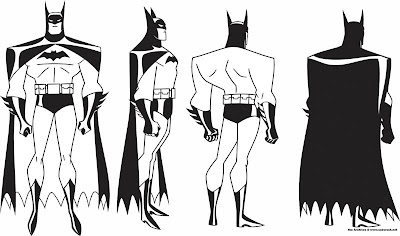

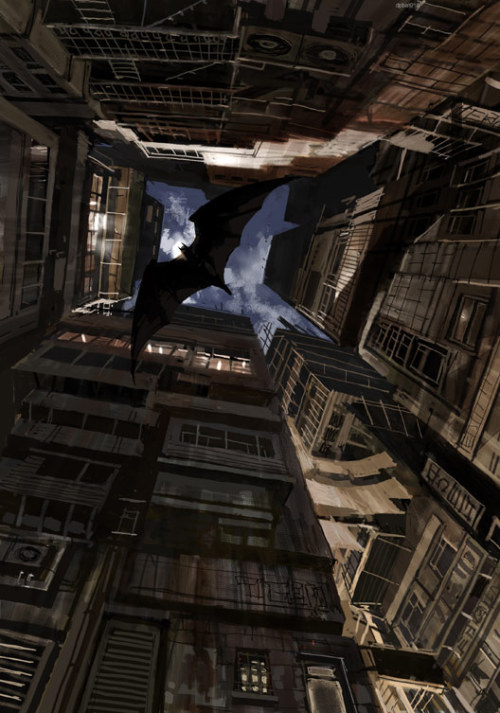

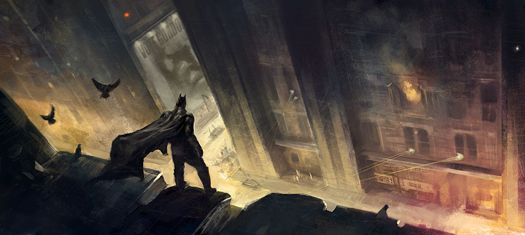

Etc. etc. You get the idea. Check your lecture notes on "Thumbnailing" and "Referencing"

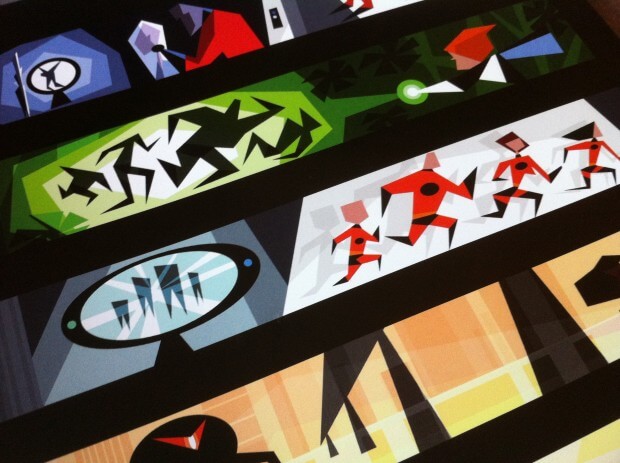

WHAT WILL YOUR FILM LOOK LIKE

See Andi's Week 10 notes on Layout and Pre-Viz, and try to include field guides (templates under the Graticules folder in Course content tab.
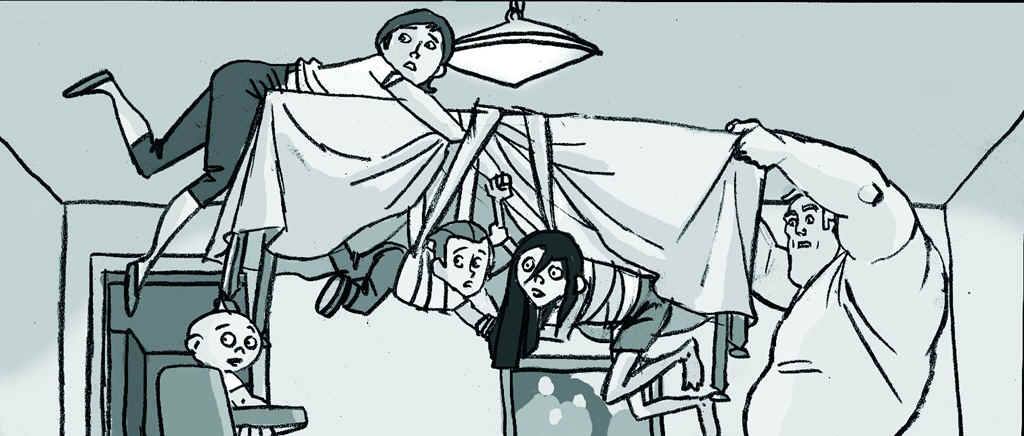

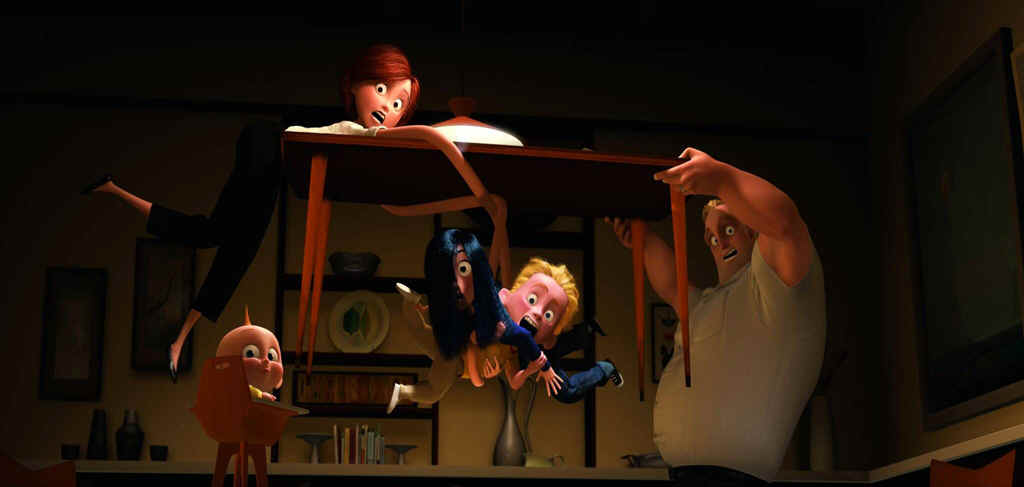
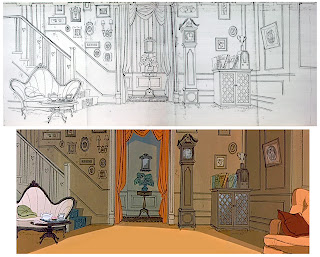
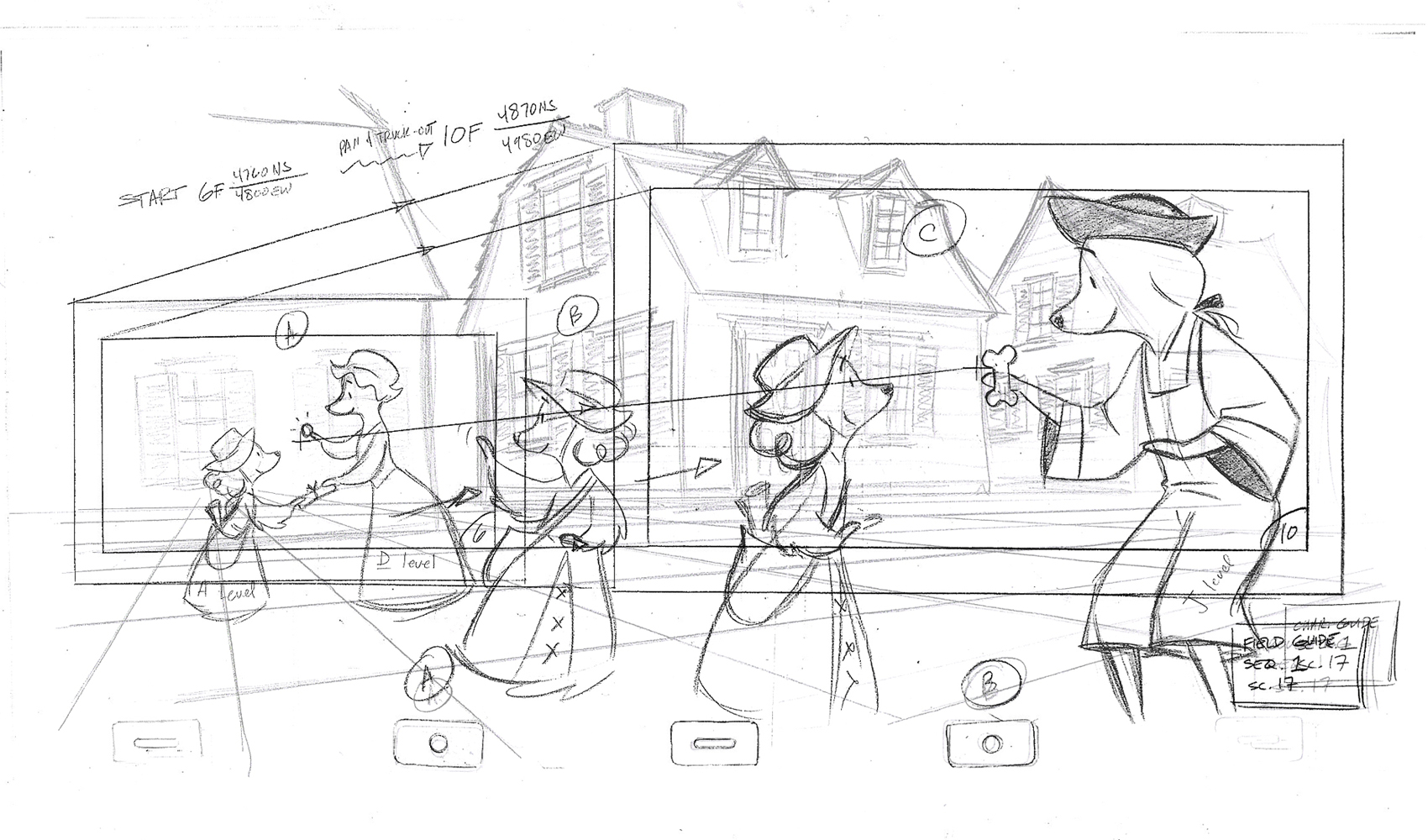
Either 3 minutes of rough "key" shots, or 1.5 minutes of "every" intended shot is fine, if a full 3 minute animatic is too overwhelming. Do your best. Also, you don't need dialogue or sound effects, but a bit of appropriate music might be an idea to help with your intended editing/pacing/rhythm
A couple of rough examples of what each submitted element should (roughly) look like. Obviously, this will vary according to your style etc. etc. Any questions, email me!
Also, for those who needed that quick rundown of Adobe After Effects/Premier in class for the animatic process, and have forgotten any steps needed to complete yours, email me and I can walk you through it. Otherwise, there's still 2 weeks after next week, I can help you out in class.
So as you know, the assessment is: (my comments in red)
"Create a story for a predominantly animated short film, however this is not limited to cartoon style
character animation. The story should be around 3 minutes long."
Deliverables include:
"visual development artwork (environments, character profile and design, preliminary sketches and reference image folio),"
So, Mood boards/reference folders categorized into environments costumes/characters, props etc. Basically, if for example your character is a samurai, and you've designed a turnaround shot of a samurai, I want to see images of where you were inspired from, what's the Armour look like, is it the correct century your story is set in etc.
Let's pretend I'm doing a character called "Batman", featuring a short sequence with a Tank/Sports Car-like "Batmobile", in a dark city, and some goons to fight. Some Concept stuff might look like this.






"storyboard (including text/dialogue elements, sound design direction and general directors notes)."
Thumbnails, Roughs and the proper clean up storyboards, compelee with camera movements, arrows etc. where applicable. Try to present storyboards in any of the ways shown in class. There are templates available for the 3 panel widescreen film style in the Course content tab- inclass exercises-Exercise 2: Camera Conventions Folder at Learning @ GU, or on the Right hand side of this blog for the 3 across 2D animation still boards. 3-6 panels a page is fine.

 |
| Template at Learning @ GU, or click and "Save As" |
"examples of moodboards of two sequences of varying tones"
A Typo: Do Colourboards instead (Moodboards are part of referencing anyway). See Week 9 Lecture notes.

"Full-colour Treatment image (style, genre, proposed visual treatment) - The "look" shot"

"3 or 4 correctly structured layout or pre-viz shots that concur with industry standards"



Or 2D examples:


NOTE: If your project is live action, still do this as if it was "Set design", much like the character turnaround shot would be "Costume Design".
"An animatic is also required that indicates broad timing and pacing for the project."
Further details and delivery instructions to be announced in class and with assignment handouts in week 2. The project is designed to develop a feasible script for possible production as a graduating project during the program. this is NOT intended to be the final idea that will be made, but a draft development exercise in realising the range of aspects that need to be determined to develop a good short project
LAST IN-CLASS EXERCISES TO DO: Updates for next week's Class- Wk 12
A couple of quick points before I post the Week 11 Tute clips and some assessment 2 info:
The week 10 lecture that Andi conducted on Layouts and Pre-Viz are in the 'Lecture notes' folder in th 'Course Content' tab at Learning @ GU. I recommend re-reading this in relation to making your layout shots for Assessment 2 (Visual Script development).
Also: for the In-Class Exericses: I want two extra things done, which should only take you 20-30 mins. (since we were unable to do this in class with numbers vs. computers available).
1: Go to the lecture notes for week 10 (Layout and Pre Viz). Andi suggested this:
http://www.youtube.com/watch?v=TNMpa5yBf5o
Pick two shots from Toy Story 3 trailer and break them back down into the layers, levels, camera positions, timing and key pose set-ups.

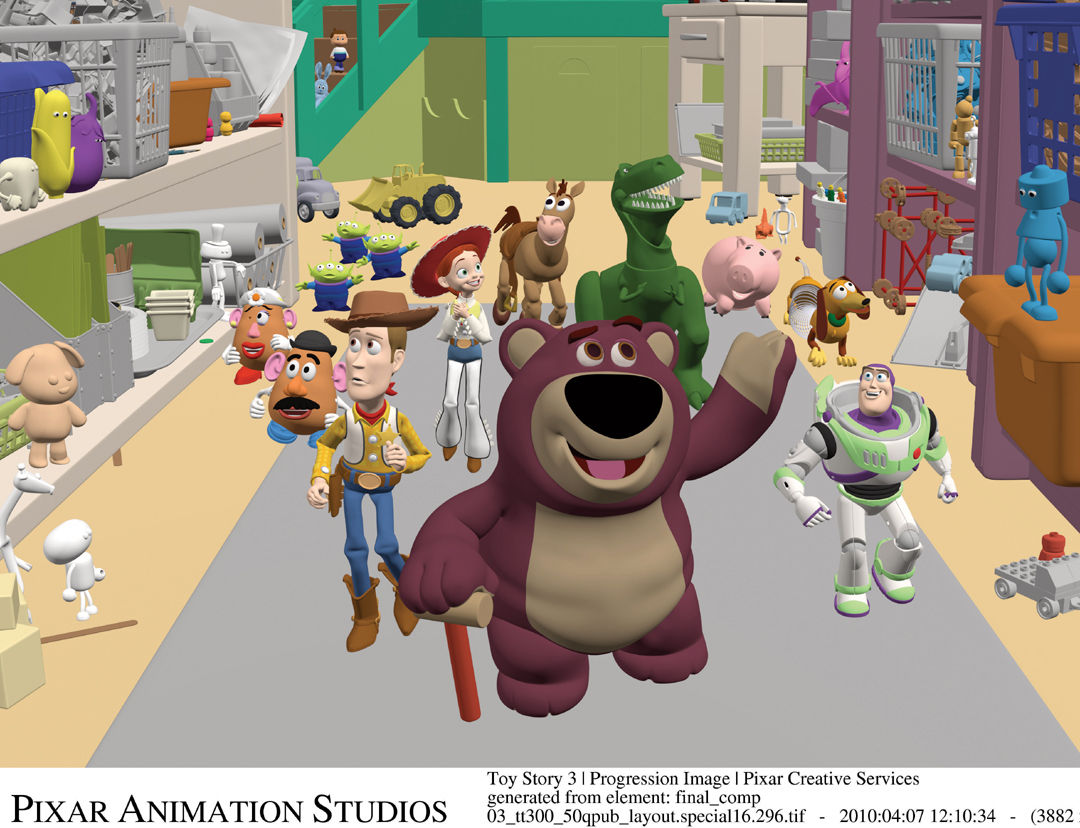
Do this by making notes (just some dot points is fine), grabbing screen shots and creating a logical labeling code
2: The other one is, take the X-Men 2 sample script I gave out for the storyboarding exercise (if you don't have it, go to the "in Class Exercises' folder in the 'Course Content' tab, and go to 'Thumbnailing from a Script' section.

I want a Mood board for the X-Men hallway/mansion scene sample- If "you" were the concept artist, how would that scene look? Grab images from the internet and make up a mood board as if you were then going to go off and create some concept art.
Getting clarification for the In-classes exercises, as the assessment sheet states this will due next week (week 12) in PDF format. Treat this as the due date until I can clarify.
There is a Guest Lecture on at 3pm at the Central Lecture theatre, by Professor INGO PETZKE https://learning.secure.griffith.edu.au/courses/1/2107GFS_3125_SB/content/_2420249_1/The%20Life%20and%20Works%20of%20Oskar%20Fischinger.pdf?bsession=99405869&bsession_str=session_id=99405869,user_id_pk1=56295,user_id_sos_id_pk2=1,one_time_token=
Info at Learning @GU. Lecture will be as normal at 1pm, which will give us 2 hours to play with. Email me with any questions.
The week 10 lecture that Andi conducted on Layouts and Pre-Viz are in the 'Lecture notes' folder in th 'Course Content' tab at Learning @ GU. I recommend re-reading this in relation to making your layout shots for Assessment 2 (Visual Script development).
Also: for the In-Class Exericses: I want two extra things done, which should only take you 20-30 mins. (since we were unable to do this in class with numbers vs. computers available).
1: Go to the lecture notes for week 10 (Layout and Pre Viz). Andi suggested this:
http://www.youtube.com/watch?v=TNMpa5yBf5o
Pick two shots from Toy Story 3 trailer and break them back down into the layers, levels, camera positions, timing and key pose set-ups.


Do this by making notes (just some dot points is fine), grabbing screen shots and creating a logical labeling code
2: The other one is, take the X-Men 2 sample script I gave out for the storyboarding exercise (if you don't have it, go to the "in Class Exercises' folder in the 'Course Content' tab, and go to 'Thumbnailing from a Script' section.

Getting clarification for the In-classes exercises, as the assessment sheet states this will due next week (week 12) in PDF format. Treat this as the due date until I can clarify.
There is a Guest Lecture on at 3pm at the Central Lecture theatre, by Professor INGO PETZKE https://learning.secure.griffith.edu.au/courses/1/2107GFS_3125_SB/content/_2420249_1/The%20Life%20and%20Works%20of%20Oskar%20Fischinger.pdf?bsession=99405869&bsession_str=session_id=99405869,user_id_pk1=56295,user_id_sos_id_pk2=1,one_time_token=
Info at Learning @GU. Lecture will be as normal at 1pm, which will give us 2 hours to play with. Email me with any questions.
Thursday, October 4, 2012
Week 10 Clip recap
Only one clip this week, as you remember, we had Andi take the lecture on Layouts and Pre-Viz. As this was her job in Animation studios for many years, it was a no-brainer, and awesome, to have her speak about the layout department tasks in the pre-production process. Thanks Andi :D
This clip or two that we watched is one part culmination of the lessons we have covered thus far, plus an into into next week's lecture on 'Editing'. A particular point that I want you to remember (which I brought up in class) was that this biopic/drama still utilizes composing theories that some people would normally mistaken as action film type shots (typically since we've seen examples used in 'The Matrix', 'Casino Royale' or even 'Ben 10' cartoons for instance). Make no mistake, you can "jazz" up your "talking head"/exposition/ drama scenes with compositional concepts we spoke of back in the early part of the semester.
Have a look at the lecture slides from week 8, here's an example or two of theory in practice :)
This clip misses out on the "Clay v. Liston" Weigh in, which is a scene I like as despite the two characters being in the midst of a huge room full of people, the focus is purely on them, and the frames are composed in a way that the focus is always on the main two, whether it's through depth of field, negative space or framing Clay/Ali and Liston between the shoulders and heads of the people around them. The "blurring" of foreground heads and/or background people immediately draws your eye to the focal point of the screen. Could only find an Italian version of this scene, but no matter. The story is clear through camera shots, posing/acting and editing.
Anyways, gotta run, will make a post tomorrow showing some examples to clarify what is to be produced for the final assessment.
This clip or two that we watched is one part culmination of the lessons we have covered thus far, plus an into into next week's lecture on 'Editing'. A particular point that I want you to remember (which I brought up in class) was that this biopic/drama still utilizes composing theories that some people would normally mistaken as action film type shots (typically since we've seen examples used in 'The Matrix', 'Casino Royale' or even 'Ben 10' cartoons for instance). Make no mistake, you can "jazz" up your "talking head"/exposition/ drama scenes with compositional concepts we spoke of back in the early part of the semester.
 |
| Note the circular compositon, and the "fanning" of the men surrounding Clay/Ali in the shot, from far left foreground to far right, with Ali the focal point (not just "standing vertical" in shot.) |
 |
| Another shot, where Depth of field, composition and the direction of the people's heads (all looking towards Clay/Ali) lead the eye to the focal point. |
 |
| "Beyond the standard point of Interest" (Icon) In this case, Ali's famous footwork signifies his entry into the ring, rather than a medium or full body shot. |
This clip misses out on the "Clay v. Liston" Weigh in, which is a scene I like as despite the two characters being in the midst of a huge room full of people, the focus is purely on them, and the frames are composed in a way that the focus is always on the main two, whether it's through depth of field, negative space or framing Clay/Ali and Liston between the shoulders and heads of the people around them. The "blurring" of foreground heads and/or background people immediately draws your eye to the focal point of the screen. Could only find an Italian version of this scene, but no matter. The story is clear through camera shots, posing/acting and editing.
Anyways, gotta run, will make a post tomorrow showing some examples to clarify what is to be produced for the final assessment.
Tuesday, October 2, 2012
"What if?"...Animated Indiana Jones Concept art
Awesome :D
By Artist Patrick Schmoenmaker, see the link under the image.
It also gives you an idea of what is possible in relation to the deliverable/concept art for the final assessment- I.e.: Character model sheet, and "the look" shots- Concepts for scenes, backgrounds, colour choices etc.

http://geektyrant.com/news/2012/9/25/indiana-jones-animated-style-art.html
More on assessment examples and recap of today's class sometime this week. AS usual, any dramas, questions etc. shoot me an email :)
By Artist Patrick Schmoenmaker, see the link under the image.
It also gives you an idea of what is possible in relation to the deliverable/concept art for the final assessment- I.e.: Character model sheet, and "the look" shots- Concepts for scenes, backgrounds, colour choices etc.

http://geektyrant.com/news/2012/9/25/indiana-jones-animated-style-art.html
More on assessment examples and recap of today's class sometime this week. AS usual, any dramas, questions etc. shoot me an email :)
Monday, October 1, 2012
Preproduction Artwork can save lives...Just ask Jack Kirby ;D
Now for something a little different...
Ben Affleck's upcoming film 'Argo', based in the true story of how the CIA rescued 6 diplomats from Iran in 1979 by posing as a fake film production company, has a Jack Kirby concept art connection. Read more here, and see some of Kirby's concept art for the "fake" sci-fi film. http://www.comicsalliance.com/2012/01/05/jack-kirby-cia/

Ben Affleck's upcoming film 'Argo', based in the true story of how the CIA rescued 6 diplomats from Iran in 1979 by posing as a fake film production company, has a Jack Kirby concept art connection. Read more here, and see some of Kirby's concept art for the "fake" sci-fi film. http://www.comicsalliance.com/2012/01/05/jack-kirby-cia/

Subscribe to:
Posts (Atom)

















